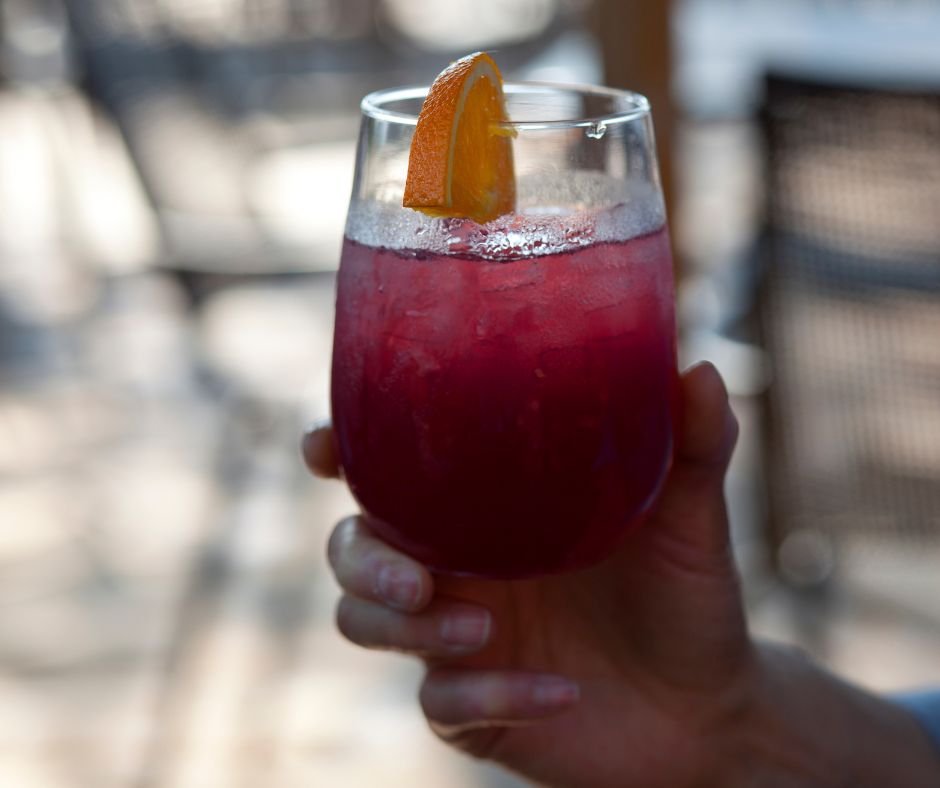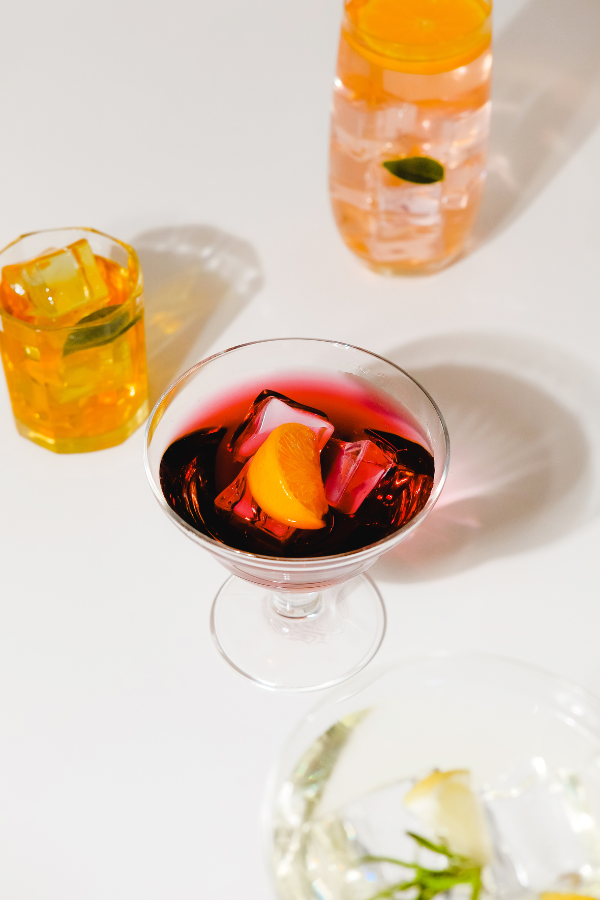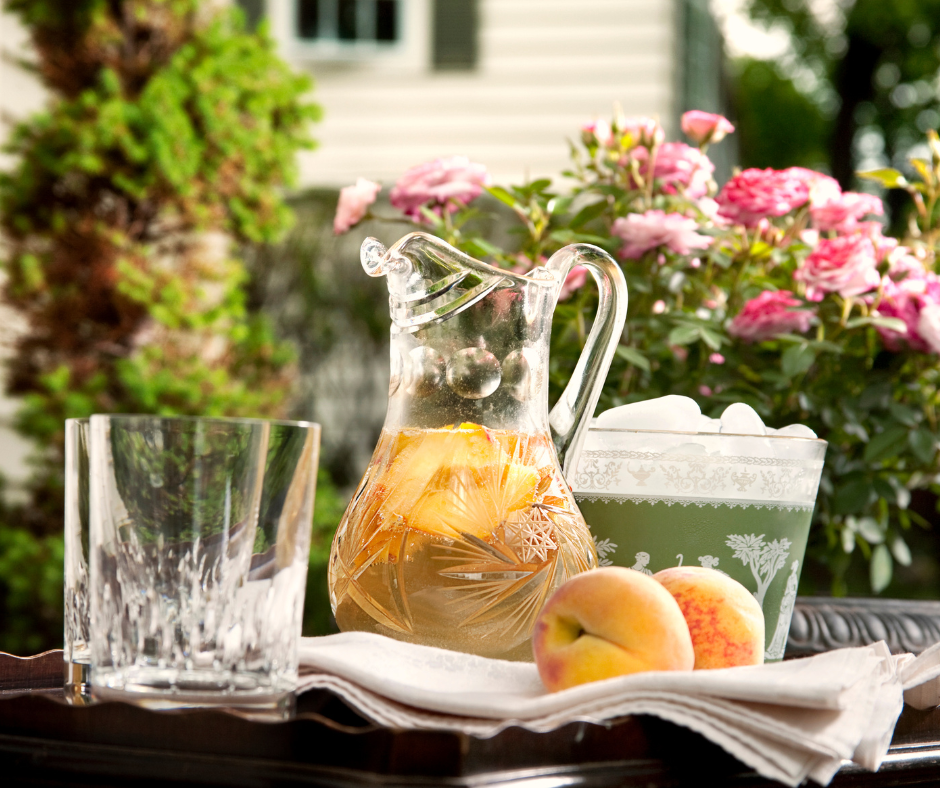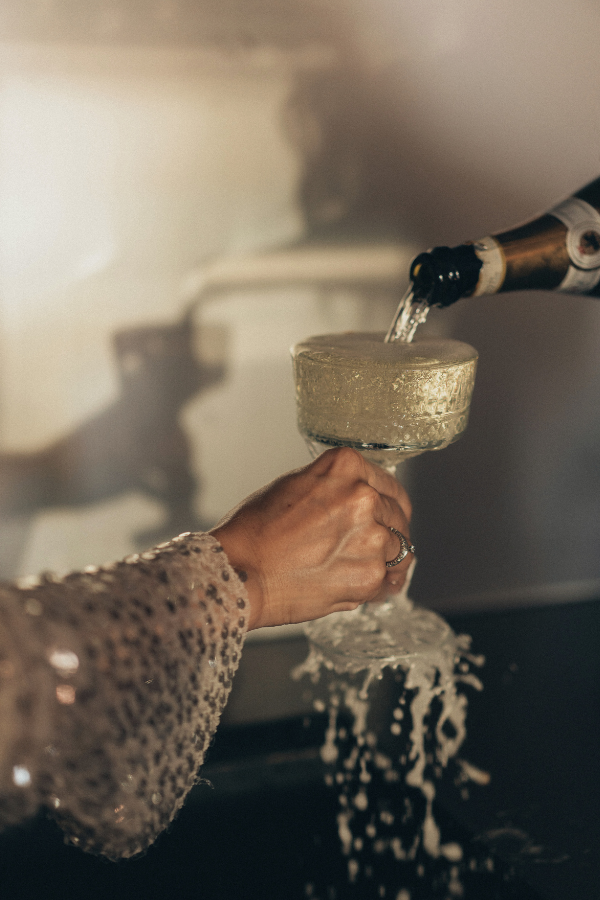
Savoring Sangria: Exploring Its Origins & Essential Ingredients
Summary
Sangria, a popular beverage with a rich history, originated in Spain and is made by mixing wine with fruits, sweeteners, and sometimes spirits. It has evolved from its Roman and Moorish influences into various styles, including red, white, rosé, and sparkling versions, each offering unique flavor experiences. Essential ingredients for crafting sangria at home include quality wine, fresh fruits, sweeteners, and spices or herbs. The article also provides a step-by-step guide and a recipe for making Sangria Blanca.
Reflection Questions
Journal Prompt
Sangria—celebrated for its rich, fruity flavor and refreshing quality—has long held a place of cultural significance in regions across the globe, particularly in Spain. As a fusion of red, white, or rosé wine, fruits, and occasionally spirits, Sangria’s versatility and adaptability have allowed it to become a popular drink enjoyed in numerous countries worldwide. In this article, we will trace the history of Sangria, while highlighting its importance as a symbol of communal celebration and hospitality. From its humble beginnings to its status as a globally recognized drink, sangria’s evolution reflects not only a diverse culinary heritage but also the adaptability of traditional recipes to contemporary tastes. As we wrap up the article, we will also list a few of our favorite sangria recipes so you can create a delicious drink at home. Read on to learn more!
The Origins of Sangria

The word “Sangria” is derived from the Spanish word “sangre,” which means “blood” in English. This reference is attributed to the deep red color of traditional sangria, which is typically made with red wine. The name reflects the drink’s characteristic hue, reminiscent of blood, and has been associated with the beverage since its inception.
The genesis of Sangria can be traced back to the early practices of diluting wine with water, a tradition that originated to prevent waterborne diseases. The Romans, as they expanded their empire across the Iberian Peninsula, brought with them viticulture, planting vineyards and inadvertently laying the groundwork for Sangria.
The Moors’ subsequent occupation of Spain introduced a range of spices and fruits, such as citrus and pomegranates, which later became integral to Sangria’s development. This convergence of cultures set the stage for the evolution of Sangria from a simple wine concoction to a more complex and flavored beverage.
Sangria in Spain

Sangria’s creation and development in Spain are deeply intertwined with the country’s rich history and cultural evolution, and its spread across Europe signifies its appeal and adaptability. While the exact origin of Sangria is unclear, its roots can be traced back to the Roman Empire’s occupation of Spain. The Romans brought viticulture with them, and it became common to fortify water with wine, herbs, and spices to sanitize the drinking water and make it more palatable.
During the Moorish occupation of Spain, the introduction of new fruits like citrus and spices further influenced the evolution of early Sangria-like beverages. Although the Moors were Muslims and abstained from alcohol, their contribution to agriculture and flavor profiles had a lasting impact.
Over the centuries, as wine production flourished in various regions of Spain, locals began to mix wine with fruits and spices, leading to the birth of Sangria as it is known today. Each region developed its own version of Sangria, using local fruits and fruit juices, red or white wine, and sometimes adding local spirits.
In Spanish culture, Sangria became synonymous with festivity and social gatherings. It was not just a beverage. Traditionally, Sangria is also a symbol of leisure, community, and celebration, often enjoyed at parties, festivals, and family gatherings.
Drinking Sangria in Spain
In Spain, Sangria is traditionally consumed during the warmer months, primarily in spring and summer. Its refreshing and fruity nature makes it a popular choice for outdoor gatherings, barbecues, and social events during these seasons. Sangria is often associated with leisure and festivity, making it a common beverage at Spanish restaurants, parties, festivals, and family get-togethers.
However, Sangria is not strictly limited to the warmer months. The relaxed and social culture of Spain, along with the country’s love for gatherings and celebrations, makes Sangria a fitting drink for many occasions, regardless of the season.
Sangria’s Spread Globally

Sangria’s introduction to the Americas and other parts of the world is closely tied to Spanish and Portuguese exploration and colonization. As it spread globally, Sangria was embraced and adapted to suit local tastes and available ingredients.
In the United States, for instance, Sangria gained popularity after being featured at the 1964 New York World’s Fair. Each region infused its unique touch, leading to a plethora of Sangria variations, from those favoring tropical fruits in warmer climates to others incorporating local wine varietals in different countries. This global journey has made Sangria a versatile and beloved drink across continents.
Beyond Sangria’s Origins: Adaptations of the Popular Wine Punch

Sangria, with its versatile and adaptable nature, has given rise to various styles and variations around the world. Each variety of Sangria offers a different taste experience, allowing for creativity and personalization according to individual preferences and occasions. The house Sangria at your favorite restaurant might differ significantly from the one you make at home. Below are some of the different varieties of Sangria.
Traditional Red Sangria: The classic version, originating from Spain, typically uses red wine, often a Spanish varietal like Tempranillo or Rioja, mixed with citrus fruits like oranges and lemons, a sweetener such as sugar, and a splash of brandy.
White Sangria (Sangria Blanca): A lighter alternative to red Sangria, white Sangria uses white wine, such as Sauvignon Blanc or Pinot Grigio, and is often mixed with peaches, nectarines, and berries. It might include a lighter spirit like white rum or flavored liqueur.
Rosé Sangria: Utilizing rosé wine, this version is a balance between red and white Sangria. It’s often paired with summer fruits like strawberries, raspberries, and citrus, and sometimes complemented with a splash of gin or elderflower liqueur.
Cava Sangria: A sparkling variant, Cava Sangria uses Spanish Cava (a type of sparkling wine) combined with fresh fruits, and occasionally, a touch of liqueur. This type of Sangria is effervescent and typically lighter in alcohol content.
Sangria de Cerveza: A less common type, this Sangria is made with beer as the base instead of wine. Light beers are usually mixed with lemon-lime soda, citrus fruits, and sometimes a clear spirit like vodka.
Fruit-Flavored Sangria: These are modern takes on Sangria where specific fruit flavors are emphasized, such as mango, pineapple, or berry Sangria. They often use corresponding fruit juices or nectars, along with complementary fruits and sometimes flavored liqueurs.
Non-Alcoholic Sangria: Ideal for those avoiding alcohol, this version replaces wine with grape juice or non-alcoholic wines and follows the traditional fruit additions and sweeteners.
Spiced Sangria: Some recipes incorporate spices like cinnamon, star anise, or cloves, especially in red Sangria, to give a warm, aromatic depth suitable for cooler weather.
Regional Variations: In different parts of the world, Sangria recipes are adapted to include local fruits, wines, and spirits, leading to unique regional variations that reflect local tastes and ingredients.
Key Ingredients in a Traditional Sangria
Wine: The Foundation

The foundation of Sangria is wine, which significantly influences its flavor profile. Traditionally, red wine, particularly Spanish varieties like Tempranillo or Rioja, is used, giving Sangria its classic robust and fruity character.
However, white wines, such as Verdejo, and even rosé wines have become popular in modern versions, offering a lighter, more refreshing taste. Whether you opt for a red wine, white wine, or rosé in your own Sangria recipe will determine the overall flavor and strength of the iced drink, with each type bringing its unique notes and depth to the beverage.
Fruit: The Sweetness and Texture
Fruit is a crucial component that adds sweetness, texture, and visual appeal to Sangria. Common fruit flavors used in traditional recipes include oranges, lemons, and apples, which provide a balance of sweetness and citrusy tartness.
Modern interpretations often incorporate a wider variety of fruits like berries, peaches, and melons, adapting to seasonal availability and personal preferences. The fruits are typically sliced or chopped and added to the wine, where they infuse additional flavors and absorb the wine, becoming a flavorful component to be enjoyed alongside the drink.
Of course, some augment the texture of fresh fruit with the intense flavor of fruit juice. Consider combining orange juice and sliced oranges next time you make sangria!
Sweeteners and Spirits

To enhance the sweetness and complexity of Sangria, a variety of sweeteners can be used. Traditional recipes often call for sugar, while contemporary versions might use honey, agave syrup, or flavored syrups, allowing for customization of sweetness levels.
Additionally, spirits such as brandy, rum, or flavored liqueurs like orange liqueur are commonly added to Sangria to intensify its flavor and add an extra dimension of richness. The choice and amount of sweeteners and spirits can significantly alter the taste, alcohol content, and overall profile of the Sangria, making it either a light, fruity concoction or a more potent, complex beverage.
Spices and Herbs

The best Sangria is a bit zesty. Spices and herbs are essential in crafting the depth and character of Sangria. Traditional recipes often incorporate cinnamon sticks or cloves, adding a warm, spicy undertone. Herbs like mint or basil can be included for a refreshing, aromatic note.
In modern interpretations, there’s a growing trend to experiment with various spices and herbs like star anise, vanilla pods, or rosemary, introducing innovative flavors to the classic Sangria. These additions not only enrich the taste profile but also contribute to the drink’s aromatic complexity, making each sip a more nuanced and sensory experience.
Making Sangria at Home: A Step-by-Step Guide

The key to exceptional homemade Sangria lies in the selection of quality ingredients. Start with a good base wine that aligns with the Sangria type you are aiming to make; a decent red, white, or rosé wine sets the right foundation.
Choose fresh, ripe fruits that complement your wine choice – citrus fruits for traditional Sangria, or a mix of berries and stone fruits for white or rosé Sangria. When it comes to sweeteners, opt for natural choices like cane sugar, honey, or agave syrup. If adding spirits for depth, select brandy, rum, or a flavored liqueur that harmonizes with the other ingredients.
Begin by slicing or chopping the fruits and placing them in a large pitcher. If using sugar, sprinkle it over the fruit and muddle gently to release the juices. Pour in the wine and stir to combine, ensuring the sugar (if used) is fully dissolved. Add any spirits or liqueurs at this stage.
For a spiced Sangria, infuse the wine with spices like cinnamon or star anise before adding to the fruit. Allow the Sangria to chill in the refrigerator for several hours, preferably overnight, for the flavors to meld. Just before serving, add chilled soda water or sparkling water for a refreshing effervescence.
Presentation enhances the Sangria experience. Serve the Sangria in a clear pitcher or a beverage dispenser to showcase the colorful fruits. Use wine glasses or highball glasses for serving, and ensure each glass gets a good mix of fruit and liquid.
Garnish glasses with a slice of citrus fruit or a sprig of fresh mint for an extra touch of elegance. For a festive look, add ice cubes made with small fruit pieces or edible flowers. Serve Sangria chilled or with a few ice cubes to keep it refreshing, particularly on warm days.
Our Sangria Blanco Recipe to Try at Home

Ingredients:
- 1 bottle of white wine (such as Sauvignon Blanc, Pinot Grigio, or a Spanish white like Verdejo)
- 1/4 cup of brandy (optional)
- 1/4 cup of simple syrup or honey (adjust to taste)
- 1 lemon, thinly sliced
- 1 lime, thinly sliced
- 1 orange, thinly sliced
- 1 cup of sliced strawberries
- 1/2 cup of sliced peaches or nectarines
- 1/2 cup of soda water or sparkling water
- Ice cubes
- Fresh mint for garnish (optional)
Instructions:
- Prepare the Fruit: Thinly slice the lemon, lime, orange, strawberries, and peaches or nectarines.
- Combine Wine and Fruit: In a large pitcher, combine the sliced fruit with the bottle of white wine.
- Add Sweetener and Brandy: Stir in the simple syrup or honey, and brandy if using. Adjust the amount of sweetener based on your preference.
- Chill: Let the Sangria sit in the refrigerator for at least 2-4 hours, preferably overnight, to allow the flavors to meld together.
- Add Sparkling Water: Just before serving, add the soda water or sparkling water to the Sangria for a refreshing fizz.
- Serve: Fill glasses with ice and pour the Sangria over them, making sure to get some fruit slices in each glass. Garnish with a sprig of mint if desired.
- Enjoy: Serve the Sangria chilled and enjoy it as a refreshing drink on a warm day or at a social gathering.
Note: Feel free to experiment with different fruits based on seasonality and your taste preferences. The key to a great Sangria is balancing the sweetness of the fruit with the acidity of the wine, and allowing enough time for the flavors to infuse.
Please let us know if you try our recipe in the comments below!








